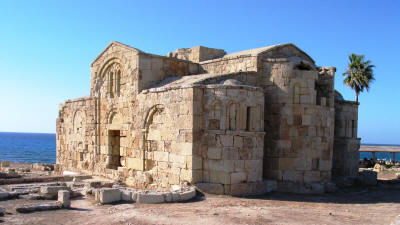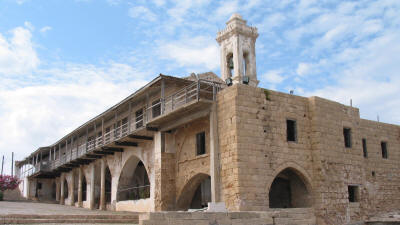Dipkarpaz
North Cyprus
 |
| Karpaz Donkeys |
The Karpaz peninsula, the easternmost part of the island, is where the land tapers into a thin strip which stretches towards Turkey. Known as the panhandle of Cyprus it is a breathtaking adventure. Secluded beaches go on for miles, and the green of Cyprus blends with the turquoise of the Mediterranean. Its lovely, unspoilt and gorgeous countryside, is so inviting that one can't help falling in love with Karpaz at first sight.
Karpaz is almost totally free from heavy concentration of industry or people, making it one of the least polluted regions in Europe. Back in Roman times, however it was densely populated, and was one of the largest baronies under the Lusignans.
A natural treasure with its wildlife and its golden stretches of sand where visitors may have a whole beach to themselves, Karpaz is simply spectacular.
The area is famous for its wild donkeys, estimated to number around 1500, (although the animal's shyness makes them difficult to count). Most of the donkeys now live in a fenced off reserve on the eastern side of Dipkarpaz.
 |
| Ayios Philon Church |
Designated a government protected Natural and Archaeological Site since 1995, the area is a nature reserve, offering an abundance of birds, wild flowers and marine life.
Only a few hours drive from Kyrenia or Nicosia, Karpaz is another world. It may lack some of the luxuries of the Kyrenia hotels, but it makes up for all such absences with its abundance of tiny fishermen's wharfs, wonderful sandy beaches, spectacular scenery, unique wildlife, on-the-water fish restaurants (which also serve all kinds of kebabs and Cypriot mezes of course) and more.
The locals of the many little villages of Karpaz are some of the friendliest Cypriots you will meet. Ancient towns, ruins, tombs and several Byzantine churches scatter the peninsula waiting to be explored, making for great expeditions.
Dipkarpaz is the main settlement, and is the gateway to some of the areas most interesting ruins. The town is the home to North Cyprus's largest community of Greek Cypriots, who chose to remain with their Turkish Cypriot neighbours after 1974, and their whitewashed Orthodox church rubs shoulders with the mosque overlooking the main square.
 |
| Apostolos Andreas Monsastery |
Cypriots have come to think of the beauty of the Karpaz as sacred, like the Apostolos Andreas Monastery at the tip of the peninsula. The monastery is a key religious site, and the focus for Greek Cypriot pilgrimages on the important festivals of Orthodox Easter and St Andrew's day. A fortified monastery stood on this craggy shoreline in the 12th century, from where Isaac Commenos negotiated his surrender to Richard the Lionheart. The oldest surviving building is a 15th century seaside chapel, now essentially a crypt below the main icon-decorated church.
To the north of Dipkarpaz lie the spectacular seafront ruins of Ayios Philon, part of what was once Carpasia. Stones from the ancient city were used to build a 10th century church, the ruins of which still stand, and mosaics are still visible from a far earlier basilica.
Just five miles away are the remnants of Aphendrika, said to have been one of the island's foremost cities, where you can see Cyprus's oldest surviving domed church.
Mediterranean on your right, your left, and ahead! Don't forget to take your camera with you!
For a comprehensive list of places to visit, look at our Places of Interest section.